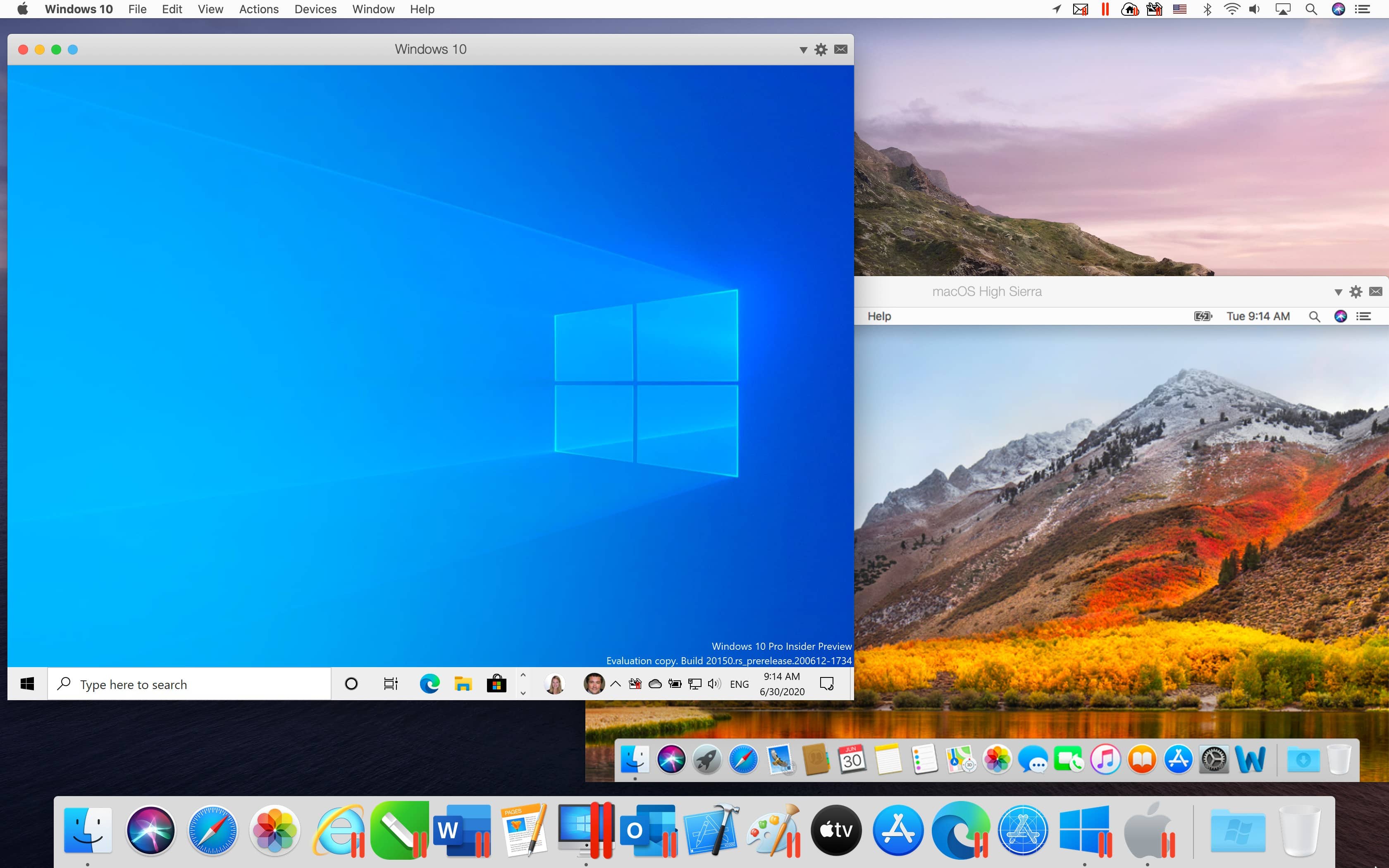It’s that time of year—iPhone pre-order season, and the release of a new macOS. Just like the new iPhone X, this year’s macOS release has IT administrators excited, as well as nervous. This year, there is ample reason to be excited, with the release of Apple File System (APFS). If you have not yet heard about the new file system, Apple’s web site has more detailed information.
Parallels Mac Management for Microsoft SCCM customers have been asking about compatibility with APFS since it was first rumored. As the API keeps evolving, it was uncertain what the final release would look like, but now we are able to answer questions and share some great news.
If you intend to upgrade your Mac to macOS High Sierra or higher and keep using Parallels Desktop for Mac, we strongly recommend you. ”Parallels Desktop is the easiest. MacOS Mojave 10.14, or macOS High Sierra 10.13. Apple M1 chip, Intel Core 2 Duo, Core i3, Core i5, Core i7, Core. Parallels has launched Parallels Desktop 13 for Mac, which provides macOS High Sierra readiness and support for upcoming Windows 10 features. What’s more, it makes it simple for MacBook Pro users to add Windows applications to the Touch Bar, and use Touch Bar within Windows applications, according to Jack Zubarev, Parallels president. Feb 18, 2021 High Sierra 10.13 Sierra 10.12 Parallels Desktop 16 is also compatible with Mac apps and also lets you connect a range of Bluetooth devices with the virtual machine, using the Bluetooth feature of your Mac computer.
Parallels Mac Management v6.1
In early October, we plan to release Parallels Mac Management v6.1. This release will officially support macOS High Sierra 10.13. You can expect Parallels Mac Management to work seamlessly with macOS High Sierra, with just a few limitations:
- In rare cases, a Mac may not be able to NetBoot a macOS image; you may see a blank screen at the end of the boot sequence. We are investigating the issue and will update users with more information as soon as it is available.
- The Format and Partition Disk task sequence step has limited support for APFS.
- The following OSD scenarios are supported by Parallels Mac Management v6.1:
- Apply macOS High Sierra 10.13 to a Mac that has already upgraded to 10.13, without re-partitioning
- Format and partition, then apply macOS High Sierra 10.13 with implicit conversion to APFS
Parallels Mac Management Releases Prior to v6.1
Releases prior to v6.1 are not officially supported on macOS High Sierra. If you need to manage macOS High Sierra devices you must upgrade to Parallels Mac Management 6.1 (or newer). At the time of writing, we are aware of the following compatibility issues with macOS High Sierra:
- Not able to create a boot image from a Mac with macOS High Sierra installed
- Not able to create a system image from an APFS volume
- No APFS support in the Format and Partition Disk task sequence step
- Not able to enable FileVault2 on an APFS volume
- If during macOS upgrade the encrypted disk is convert to APFS, the recovery key will not be shown in the Mac device resource properties (the key will not be lost, only not shown)
- Not able to enroll a Mac with macOS High Sierra installed in the Apple Device Enrollment Program (DEP)
Download Parallels Mac Management v6.1
Parallels Mac Management v6.1 will be available in early October. If you have an active license you can visit the Parallels site to download the most current version.
Feedback
If you would like to suggest a feature, please post your ideas in the Feature Suggestions Forum.
I wanted to install macOS High Sierra on a virtual machine on my Mac so that I could debug some issues. The host machine is running macOS and the guest VM would be running macOS as well.

VirtualBox does not support APFS right now and neither does Parallels Lite. This is a problem since APFS is the default for macOS High Sierra.
Although it should be possible to install macOS High Sierra in VirtualBox on an HFS+ disk, I could not get it to work with VirtualBox. However, I was able to get it working with Parallels Desktop Lite (after a couple workarounds).
I am assuming you are comfortable working with the command line, and already have a High Sierra installer available to you and downloaded on your Mac.
First, generate an .iso file from the High Sierra installer (thanks to some helpfulguides for showing me how to do this).
Run each of these commands one after another. If something goes wrong, you can reboot to clear things out and try again.
Install the Parallels Lite App from the App Store. Follow the wizard to create a new virtual machine. Choose to 'Install Windows or another OS from a DVD or image file'.
Click 'Locate Manually' to manually select our HighSierra.iso file.
You may see a warning saying 'Unable to detect operating system'. That is ok.
Click 'Continue' and select 'macOS' as the operating system.
The virtual machine should then boot to the installation iso.
Launch Terminal from the Utilities menu.
Format the virtual machine hard drive as HFS+ using the terminal.
Reboot the VM and it should boot to the installation iso again. Rebooting may be overkill, but I do it to ensure that the install iso is properly detecting the disk and partition layouts after the erase we just performed.
Parallels 8 High Sierra
Again, launch Terminal from the Utilities menu.
We will use a special installer command called startosinstall, and manually run the installer from the iso rather than using the GUI.
Parallels High Sierra Free
Substance designer. The only flags needed are --converttoapfs NO to prevent converting the disk to APFS, and --volume /Volumes/MacHD to specify our target installation volume.
